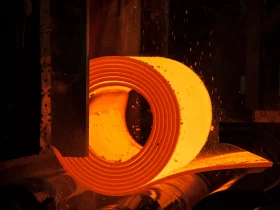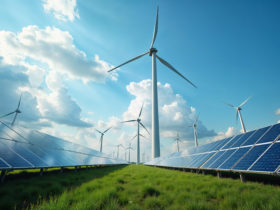The Indian steel industry has seen many ups and downs in the past couple of decades due to various factors in the global economy. The sector is also one of the core sectors of the economy and its performance is closely linked to the performance of the economy.
The industry had a good time when the global economy was roaring from 2004 to 2008 and the Indian economy was growing close to 9%. There were many infrastructure projects and the big names like Tata Steel and the like of it benefited from the boom. That’s when Tata went on to acquire Corus for 6.2 billion sterling pounds to create the 5th largest steel making company in the world. There was another deal that happened. ArcelorMittal was formed in 2006 after the takeover of Arcelor by Indian-owned Mittal Steel and merged with the latter to form the world’s biggest steel producer.
Then, the world was struck by the financial crisis and the global economy went into a tailspin. All sectors in India were affected and the government had to step into bail out companies including steel producers in India. Industrial production declined and housing sector was one of the worst affected sectors after the crisis. This had an adverse effect on the steel industry.
China also played a role in creating distress in the Indian steel sector. The Chinese companies flooded the market with low-cost steel and the domestic manufacturers were left in the lurch. The Indian government had to step in to save and protect the local steel companies. They took various measures such as levying minimum import prices, anti-dumping duties and custom duties on a variety of steel products such as stainless steel, alloy steel, etc., so that the manufacturers did not continue make losses.
These steps taken by the government gave a breather to the industry and India was able surpass Japan as the second largest steel producer in the world in 2018, but it was not out of the woods. The debt of the Indian steel companies ballooned due to decline in margins, weak demand and pricing issues in the prior year and many companies were debt ridden. There was also the threat of imports and uncertainties prevailing due to inconsistent availability of raw materials.
In this scenario, the trade war erupted between China and the US which affected the steel industry amid a wide economic slowdown in India due to lower income levels and lesser domestic steel consumption. Lower demand from auto industry and construction sector also played spoil sport for steel sector. Then, the covid pandemic hit the global economy in an unexpected way.
However, as lockdown restriction eased, demand picked up gradually in the domestic economy and due to cost pressure, the steel producers raised prices. Demand from automotive and white good sector improved. During the same time, higher input cost and tight domestic supply as a result of higher exports pushed steel prices higher. To meet the export orders from foreign countries and higher domestic demand, steel producers improved capacity utilization.
Since the start of fiscal year 2021, there has been a renewed optimism over a faster recovery of the economy and the steel companies’ production volumes have increased. Indian companies were quick to open the steel plants and start production compared to their global counterparts. This was also evident from the higher production volumes in the first quarter of FY22 and robust results posted by large steel companies like JSW steel, Tata Steel, Jindal Steel, etc. Its shares have also done well and Nifty Metal index have been on the rise in the past few of months. As of now the steel industry looks strong and as the economy expands further, the growth of steel companies in terms of profitability and positive cash flows looks intact and can sustain longer.





